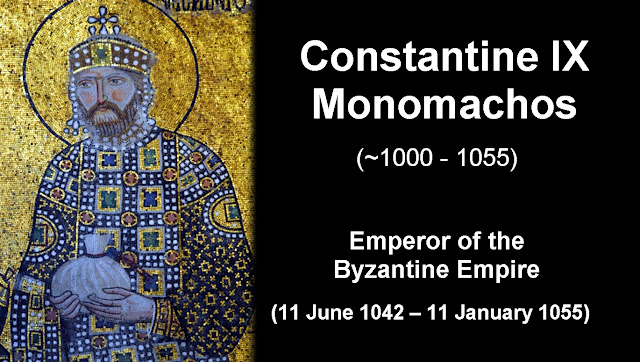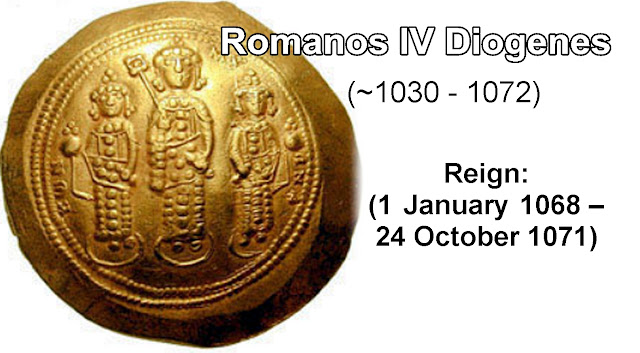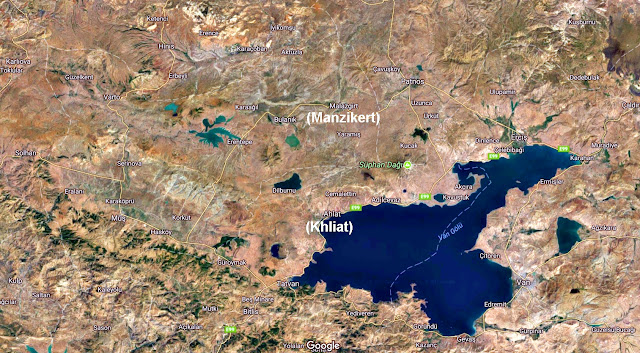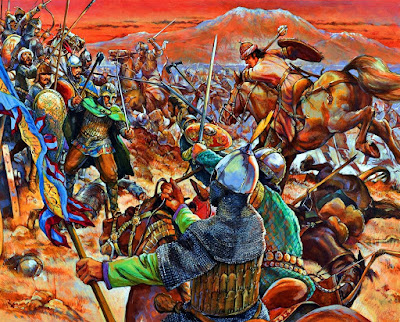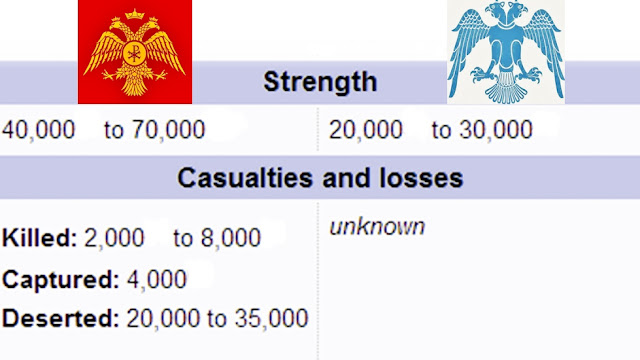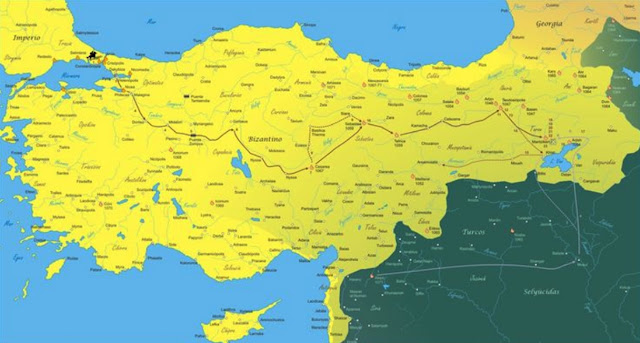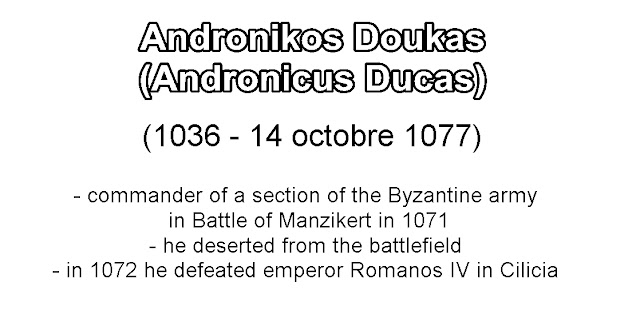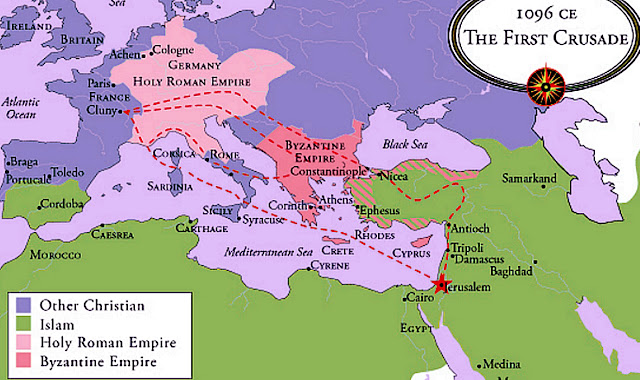Saturday, April 8, 2023
Battle of Manzikert in 1071
The Battle of Manzikert was fought between the Byzantine Empire and the Seljuq Empire on August 26, 1071 near Manzikert, in modern Malazgirt in Muş Province, Turkey. The decisive defeat of the Byzantine army and the capture of the Emperor Romanos IV Diogenes played an important role in undermining Byzantine authority in Anatolia and Armenia, and allowed for the gradual Turkification of Anatolia.
The Byzantine Empire began to decline under the reign of the militarily incompetent Constantine IX and under Constantine X. Under Constantine the IX the Byzantines first came into contact with the Seljuk Turks when they attempted to annex Ani, the Armenian capital. Constantine made a truce with the Seljuks that lasted until 1064. In 1064 they took Ani, and in 1067 the rest of Armenia, followed by Caesarea.
In 1068 Romanos IV took power, and after some speedy military reforms entrusted Manuel Comnenus to lead an expedition against the Seljuks. Manuel captured Hierapolis Bambyce in Syria, but was then defeated and captured by the Seljuks under the Sultan Alp Arslan.
Alp Arslan was the second Sultan of the Seljuk Empire and great-grandson of Seljuk, the eponymous founder of the dynasty. Despite his success Alp Arslan was quick to seek a peace treaty with the Byzantines, signed in 1069. He saw the Fatimids in Egypt as his main enemy and had no desire to be diverted by unnecessary hostilities.
But Byzantine emperor Romanos wanted to recover the lost fortresses, and led a large army around 40,000 to 70,000 men into Armenia. The march across Asia Minor was long and difficult, and Romanos did not endear himself to his troops by bringing a luxurious baggage train along with him. The expedition rested at Sebasteia on the river Halys, reaching Theodosiopolis in June 1071.
Thinking that Alp Arslan was either further away or not coming at all, Romanos marched towards Lake Van, expecting to retake Manzikert rather quickly, as well as the nearby fortress of Khliat if possible. Alp Arslan was already in the area, however, with allies and 30,000 cavalry from Aleppo and Mosul. Alp Arslan's scouts knew exactly where Romanos was, while Romanos was completely unaware of his opponent's movements.
Romanos ordered his general Joseph Tarchaniotes to take some of the regular troops to Khliat, while Romanos and the rest of the army marched to Manzikert. This split the forces in half, each taking about 20,000 men. It is unknown what happened to the army sent off with Tarchaniotes.
Romanos was unaware of the loss of Tarchaneiotes and continued to Manzikert, which he easily captured on August 23. The next day some foraging parties under Bryennios discovered the Seljuk army and were forced to retreat back to Manzikert. The Armenian general Basilakes was sent out with some cavalry, as Romanos did not believe this was Alp Arslan's full army. The cavalry was destroyed and Basilakes taken prisoner. Romanos drew up his troops into formation and sent the left wing out under Bryennios, who was almost surrounded by the quickly approaching Turks and was forced to retreat once more. The Seljuk forces hid among the nearby hills for the night, making it nearly impossible for Romanos to counterattack.
On August 25, some of Romanos' Turkic mercenaries came into contact with their Seljuk kin and deserted. Romanos then rejected a Seljuk peace embassy. He wanted to settle the eastern question and the persistent Turkic incursions and settlements with a decisive military victory, and he understood that raising another army would be both difficult and expensive. The Emperor attempted to recall Tarchaneiotes, who was no longer in the area.
On August 26 the Byzantine army gathered itself into a proper battle formation and began to march on the Turkish positions, with the left wing under Bryennios, the right wing under Theodore Alyates, and the centre under the emperor. Andronikos Doukas led the reserve forces in the rear—a foolish mistake, considering the loyalties of the Doukids. The Seljuks were organized into a crescent formation about four kilometres away.
The Byzantines held off the arrow attacks and captured Alp Arslan's camp by the end of the afternoon. They tried to force the Seljuks into a pitched battle; the Seljuk cavalry simply disengaged when challenged, the classic hit and run tactics of steppe warriors. With the Seljuks avoiding battle, Romanos was forced to order a withdrawal by the time night fell. However, the right wing misunderstood the order, and Doukas, as a rival of Romanos, deliberately ignored the
emperor and marched back to the camp outside Manzikert, rather than covering the emperor's retreat. With the Byzantines thoroughly confused, the Seljuks seized the opportunity and attacked.
The Byzantine right wing was almost immediately routed. The left wing under Bryennios held out a little longer but was also soon routed. The remnants of the Byzantine centre, including the Emperor and the Varangian Guard, were encircled by the Seljuks. Romanos was injured and taken prisoner by the Seljuks. By dawn, the professional core of the Byzantine army had been destroyed whilst many of the peasant troops and levies who had been under the command of Andronikus had fled.
When Emperor Romanos IV was conducted into the presence of Alp Arslan, the Sultan refused to believe that the bloodied and tattered man covered in dirt was the mighty Emperor of the Romans. After discovering his identity, Alp Arslan placed his boot on the Emperor's neck and forced him to kiss the ground.
Romanos remained a captive of the Sultan for a week. During this time, the Sultan allowed Romanos to eat at his table whilst concessions were agreed upon: Antioch, Edessa, Hierapolis, and Manzikert were to be surrendered. This would have left the vital core of Anatolia untouched. The Sultan then gave Romanos many presents and an escort of two emirs and one hundred Mamluks on his route to Constantinople.
Shortly after his return to his subjects, Romanos found his rule in serious trouble. Despite attempts to raise loyal troops, he was defeated three times in battle against the Doukas family and was deposed, blinded, and exiled to the island of Proti where he died soon.
Years and decades later, Manzikert came to be seen as a disaster for the Empire. Later sources therefore greatly exaggerate the numbers of troops and the number of casualties. The usurpation of Andronikos Doukas also politically destabilized the empire and it was
difficult to organize resistance to the Turkish migrations that followed the battle. These events all interacted to create a vacuum that the Turks filled. The result of this disastrous defeat was, in simplest terms, the loss of the Eastern Roman Empire's Anatolian heartland. The Byzantine Empire was limited to the area immediately around Constantinople, and the Byzantines were never again a serious military force. It is also interpreted as one of the root causes for the later Crusades, and the First Crusade of 1095 was originally a western response to the Byzantine emperor's call for military assistance after the loss of Anatolia.
